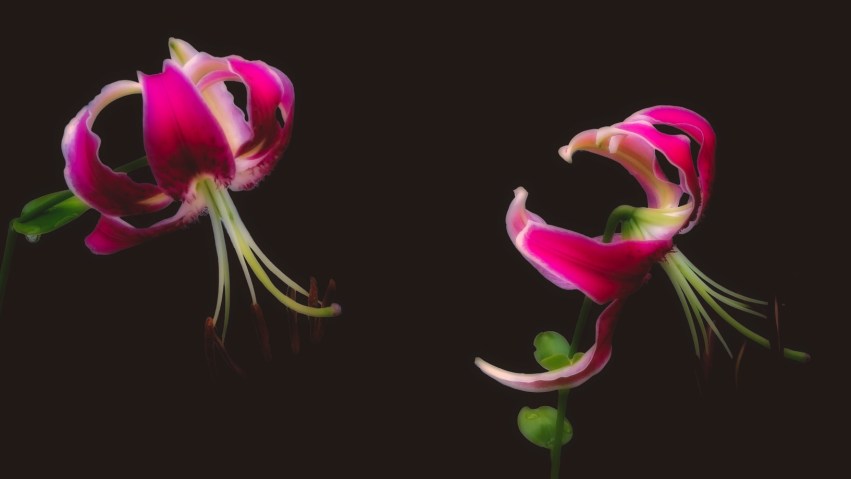From “Martagon Lily” in Lilies for English Gardens by Gertrude Jekyll:
“A very old garden flower, and, though not bright of colour, always a favourite; indeed one can scarcely think of an old English garden without the dull purple Martagon Lilies. The same distinctive form, also commonly known as turn-cap and turk’s-cap, runs through the allied Lilies of many countries, for we have it in the scarlet pomponium of northern Italy and the yellow Lily of the Pyrenees, in chalcedonicum of Greece and Asia Minor, in tenuifolium of Siberia, in superbum and Humboldtii of the United States; all these, with several others, belonging to the great Martagon group.”
From “Into the Garden” in Lilies by Naomi Slade:
“[Cultivated] plants move naturally by a process of diffusion, slowly, passed from individual to individual: but when politics gets involved, this can change dramatically. When great nations form alliances or expedience sees colonists, explorers, missionaries or collectors punch their way into new territories, almost anything that returns down the line is liable to be valued as a treasure or, at least, a fashionable novelty worth acquiring.
“In the sixteenth century, diplomatic amity broke out between the Holy Roman Empire of Western Europe, based in Vienna, and the Ottoman Empire centred in Constantinople, where Ogier Ghiselin de Busbecq was ambassador between 1554 and 1562. Astonished by the gardens he found, he brought back many unusual bulbs, including Turkish native Lilium chalcedonicum. The petals of this variety curl backwards to create a rounded shape, a little like a turban, and it may be the flower that inspired the common name of ‘Turk’s cap lily’.”
Hello! and welcome back!
I always have to speculate a little when I try to identify specific lilies I find in my photographic wanderings at Oakland Cemetery’s Gardens — but I think I’m correct in referring to the lilies in this post (and the next two) as Turk’s Cap or Martagon lilies. “Turk’s Cap” is often used to describe lilies like these, regardless of the specific varieties, because of the distinct up-curved position of the flower petals that form a shape like a turban. Some folks refer to Tiger Lilies (such as those in my previous posts Small Batches of Tiger Lilies (1 of 2) and Small Batches of Tiger Lilies (2 of 2)) as “Turk’s Cap” — though that may be simply a popularized name-choice rather than one that’s botanically accurate. “Martagon” refers to several lily hybrids, of which the lilies in these photographs appear to have membership.
So anyway… I hope that clears things up… hahaha!
It was a bit of a challenge — and also fun, the kind of fun that required a lot of patience — to present these lilies on black backgrounds. The flower petals were easy, since their colors are richly saturated and my focus was sharp enough; but the filaments (the downward pointing green structures, to which the anthers are attached) were a lot harder because — since they were photographed in bright sunlight — they’re somewhat translucent and hard to distinguish from any green shapes behind them. I was never quite satisfied with the results — I mean, I could only poke at so many pixels before “that’s close enough” got stuck in my head — so I created a separate set of the same photos where each image is slightly blurred and softened, and precision didn’t matter as much.
I don’t think of the last seven photos as better or worse than the first seven: they’re just different, created using other options among the endless choices available in Lightroom and (in this case) the Nik Collection software. I typically use Nik Collection very minimally to whiten whites, add some vignetting, and tick-up colors and contrasts; but for these photos I also tried two other techniques. I took the original seven images and added a filter called “Duplex” that provides most of the soft and diffused effect, and one called “Glamour Glow” that further softens and brightens the image, glamorously.
🙂
Thanks for reading and taking a look!















